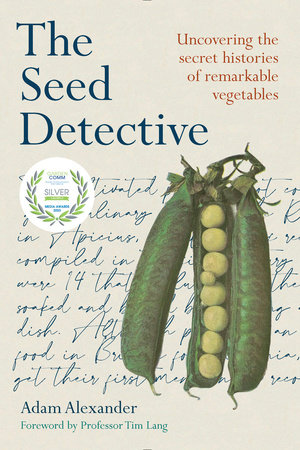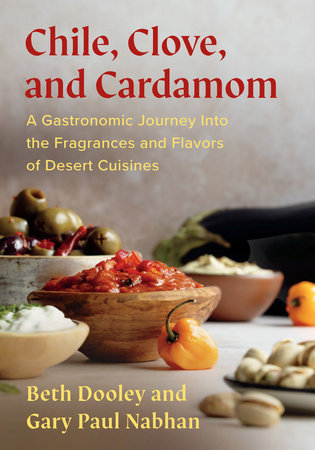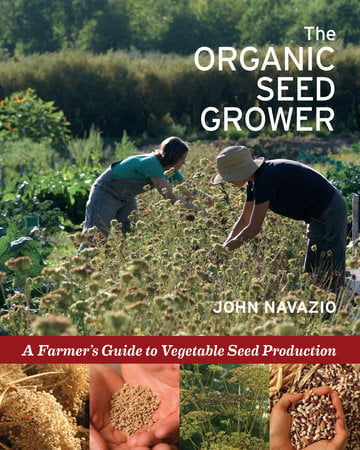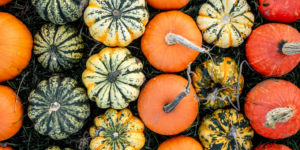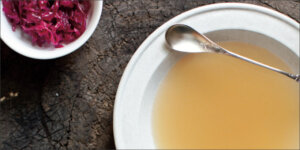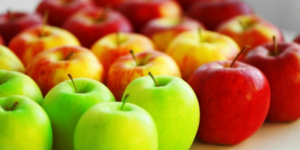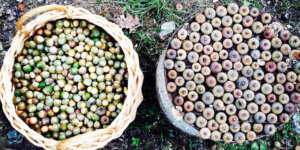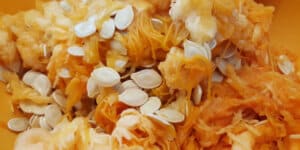Becoming A True Seed Detective: Mastering the Mission
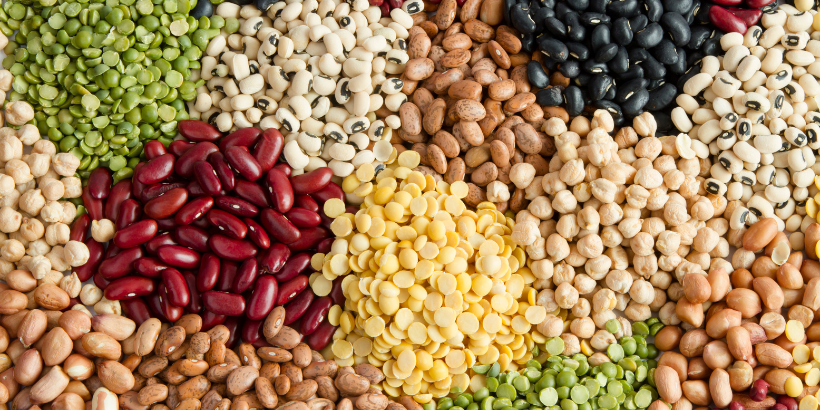
Did you ever wonder how leeks, kale, asparagus, beans, squash, and corn have ended up on our plates? Well, so did Adam Alexander, otherwise known as The Seed Detective.
The following is an excerpt from the The Seed Detective by Adam Alexander. It has been adapted for the web.
My Seed-Detective Mission
Crammed into two fridges in the garage behind my study are jars and boxes filled with envelopes containing – at the time of writing – 499 varieties of vegetable seeds, sadly most no longer commercially available: beans and peas, tomatoes and chillies, lettuces and leeks, cabbages and radish, carrots, beetroot, parsnip, turnip, sweetcorn, onions and spinach, herbs, courgettes and squash.
I like to grow at least 70 different varieties each year: firstly, because I just love eating them and, secondly, to refresh and replenish my seed stock. Some crops I grow as a seed guardian for the Heritage Seed Library – seed that will be shared among the members; others simply to share with enthusiastic and curious gardeners.
My mission was and remains to save seed so that I can do this and, most importantly, to return seed to those who first shared them with me and to support the work of the Heritage Seed Library in the U.K. and other libraries and gene banks around the world.
Seasonal Seed Saving Tasks
From high summer until early winter my days are spent harvesting the dried pods of beans and peas, scooping seeds from ripe tomatoes and rotting cucumbers, then washing and drying them on every available windowsill; winnowing lettuce seeds to separate them from their cotton-wool shrouds; threshing bags of cabbage and radish seed pods by jumping up and down on them – an activity that can drive me to drink!
Winter is the time to enjoy squash, spooning their seeds out of the fruit’s spongy centre to be sown the following spring.
This cycle of seeking out crops to sow, saving their seed and sharing them has come to be part of how I define myself.
Like those first farmers, I keep a store of dried beans, peas and chillies; bottles of tomatoes, condiments and pickled vegetables of all types that would keep me well provisioned in the event that next year’s harvest is a disaster.
And with a goodly supply of home-saved seeds I will always have plenty of wonderful vegetables to grow, too.
Adapting Crops to Local Conditions
This is important at an individual level because, as more of us save seed, so the resultant crops become adapted to local conditions.
The greater genetic diversity of traditional and open-pollinated varieties compared to modern cul- tivars makes them better able to flourish in more diverse environments.
This ability to adapt increases their resilience and means they can also have a future within a local food economy. If grown by market gardeners and small-scale horticulture, local varieties strengthen our cultural attachment to the vegetable, and it can be sold at a premium.
People love to buy vegetables whose stories are as local as they are.
Another benefit of saving one’s own seeds is that we find ourselves the following year with seeds that germinate better and faster, resulting in plants with greater vigour and, over time, greater resilience to local weather conditions. There are also commercial opportunities.
Demand for organic seeds, especially of traditional varieties, is outstripping supply globally.
Therein lies an opportunity for growers to diversify, saving their own seed and selling to others. Sometimes saving one’s own seed leads to the accidental or deliberate crossing of two different varieties of a species.
This results in a vegetable that becomes part of our national culture, as we shall see in the story of the very British relationship with the runner bean Phaseolus coccineus.
Championing Heritage and Heirloom
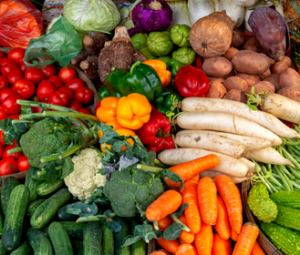 What do I mean by heritage and heirloom? We associate heritage with people and places. In the same way, heritage seeds are connected to regions and cuisines.
What do I mean by heritage and heirloom? We associate heritage with people and places. In the same way, heritage seeds are connected to regions and cuisines.
An heirloom is something that is usually passed down through families, generation after generation. It’s the same with heirloom vegetables, which are connected to individuals and families.
In the USA, the two definitions are interchangeable.
Regardless of how they are described, all these types of vegetable are open-pollinated, which means they are the result of a natural process of pollination, either by insects or wind, or because of self-pollination.
In the U.K., open-pollinated commercial varieties that are no longer sold or under cultivation are also classified as heritage.
F1 hybrid seed (the result of controlled breeding from different parents) – if treated like open- pollinated varieties – will produce offspring that are different to the parent, which is why they are not saved.
Somewhere deep within my – if not everyone’s – emotional core lurks that first farmer.
I freely admit that every morning when I go into my garden, I say a cheery good morning to all the plants. I talk to them individually too, concerned that they might be a bit under the weather; praising them if they are growing well, especially at harvest time.
I empathise with my veggies much as a shepherd might empathise with their sheep. I care about them. I love them. I firmly believe – though without any evidence – that this emotional bond was experienced by those same first farmers.
There is not a day in the year that I cannot find something tasty and nutritious in my vegetable garden grown from home-saved seed. And with their harvesting come memories of the people and places where I first found them.
A Human Connection
I have written this book out of a desire to share my enthusiasm and love for growing and eating rare, unusual, delicious vegetables, and saving and sharing their seeds.
It is through conversations with fellow gardeners and food lovers that I have come to understand how keen people are to learn more about the history of the crops on their plate; especially those that have a local and entertaining story to tell.
I have lost count of the number of times people have talked to me with pride about the pleasures they have gained from growing vegetables from their home-saved seed. Their delight in telling me of the triumphs and disasters, and above all, their pleasure in completing the circle of cultivation – sowing home-saved seeds, harvesting a crop and having fun with them in the kitchen – makes it all worthwhile.
I want to see a continued resurgence in the diversity of varieties we grow and enjoy.
With a more intimate and personal relationship with these Cinderellas of our food culture will emerge a greater desire to nurture our crops, eat better and enjoy more. But it is flavour that counts above all else.
Locally grown, just harvested and rapidly consumed, there is not a vegetable I grow that isn’t superior to anything found in a supermarket aisle.
And with this curiosity comes an enthusiasm to enjoy the delights of vegetables that are new to our taste buds. I would like to believe that you, dear reader, might come away after reading this book with a new or refreshed curiosity about where the crops that are part of our every day started life and how they became so important to our sense of self.
With a better understanding and awareness of the fabulous journeys these vegetables have made from wild parent to cultivated offspring, perhaps we won’t look at that plate of peas in quite the same way again, but rather with wonder.
If this book becomes the start of your journey into growing (if you are able), sourcing and eating delicious, rare, endangered, old and traditional varieties, I feel I will have done my job.
Seeking out crops to sow, share and save creates an unbroken thread from seed to harvest to dish, and back to seed again. It’s just such a lovely thing to do, rich with narrative.
You will find in the following pages – at least I hope you will – many stories about vegetables that, I trust, will make you smile, including the all-too-human story of a pea called Daniel O’Rourke.
Notes
1. Vavilov’s seminal work where he identifies ‘Centres of Origin’: N. I. Vavilov, Origin and Geography of Cultivated Plants, trans. Doris Löve (Cambridge, U.K.: Cambridge University Press, 1992).
2. An interesting article on the question of just how many Centres of Diversity exist: K. Kris Hirst, ‘The Eight Founder Crops and the Origins of Agriculture’, ThoughtCo, 31 August 2018, https:// www.thoughtco.com/founder-crops-origins-of-agriculture -171203.
Recommended Reads
History of The Seed Sovereignty Movement: Reclaiming the Seed
Recent Articles
Pumpkins: Halloween symbol or sweet treat? But have you ever wondered how they became a holiday staple? Discover the rich history behind this fall favorite!
Read MoreYou’ve Been Missing Out! Bone Broth is the ultimate superfood, packed with nutrients and goodness. Consider adding this nutrient-rich, immune system boosting bone broth into your daily diet.
Read MoreCIDER LOVERS ALERT! 🍎 Did you know the type of apple used can make or break the flavor? Which apple variety do you think makes the best cider?
Read MoreThese small fruits are a delicious source of nutrients that you can find almost anywhere. Get started on acorn harvesting with help from these simple tips!
Read MoreWondering what to do with pumpkin seeds? Instead of roasting them, try these alternative ways to prepare & use seeds! Plus a must-try pumpkin granola recipe.
Read More
